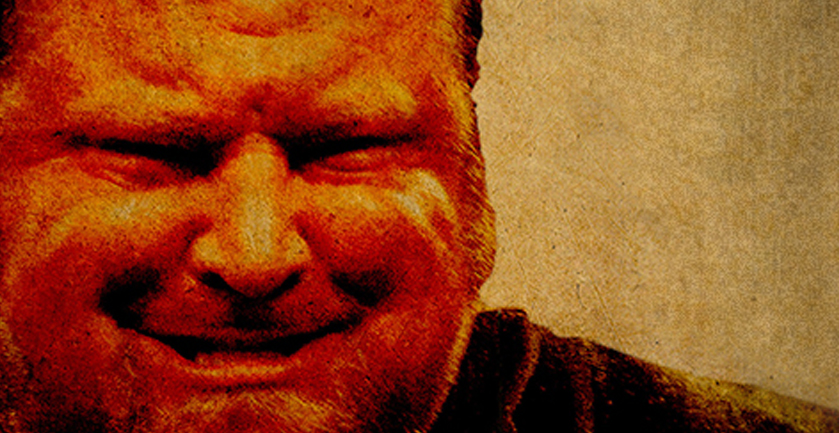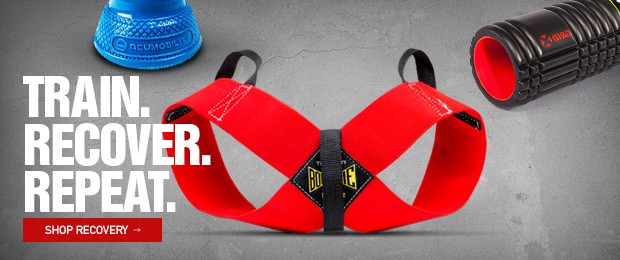
The shoulder joint is a great design for mobility, but with all that mobility there has to be a trade-off. In this case, it is mobility for strength and durability. That's not to say you can’t get your shoulders strong or keep them healthy for a very long time because you can. It just takes a bit more attention and work to do so. This is especially true when you’re a strength athlete because we put our shoulders through a tremendous amount of stress. I have been fortunate throughout my lifting career that I can say I have never had any major shoulder issues. But I can say I have dealt with a lot of nagging pains in them that affected my lifts.
I will not say the things I am going to write about will cure your shoulder pain. Without seeing you in person, I have no idea what the cause of your pain is. If you have a torn labrum or supraspinatus, you probably need to see an orthopedic surgeon because there is no exercises or stretches that will help that. I can say with a physical therapy and lifting background that many shoulder issues can be fixed or greatly improved with certain exercises and stretching. Even if you have no shoulder issues now, these are things that are good to get in the habit of doing in order to keep your shoulders healthy and pain-free. We lifters ask a lot of our shoulders.
RECENT: Assessment of Shoulder Dysfunction: Getting Ahead of the Game
One of the first things I want to talk about is an imbalance in the joint. It can be a muscular imbalance or a flexibility imbalance. So many times I have seen this wreak havoc with people shoulders, and in the long-term can do a lot of damage to the joint if not corrected. I chose to write about this one first because I would say it is my biggest issue when I let myself get lazy about this work. Now, although the shoulder is very complex, there are only three ligaments involved. Most of the stability of the shoulder actually comes from the muscles, and there are lots of them involved in the shoulder. So if there is an imbalance in these muscles due to weakness or tightness, it will have a major effect on the shoulder itself. This is something we really should stay vigilant about.
Although the joint is very complex, I find most imbalances have to simple causes: tightness of the pec muscles and weakness of the rear delts. Funny enough, the cure for these is also very simple. So let’s start with stretching of the pecs. I am sure everyone reading this can name off a couple pecs stretches already, but I wonder how often you actually do them and when.
My favorite pec stretch and the one that has worked best for me is done with a light band. I have done this particular stretch with straps and poles but I find the band to be the best. I grab the band with both hands a bit outside shoulder width and begin to raise both arms over my head. Depending on how tight you are, you may need to grab wider. I usually do not get much resistance until I begin to go past my head. When I first start to feel the stretch I will hold that position for a few seconds. Then I will keep going behind my back, stopping every 15 to 25 degrees or so and holding the stretch for a while. I go all the way back and hold. Then I come back doing the same holding in each position. An important part of this stretch most people seem to miss is pulling the shoulders down and pulling the shoulder blades together. This gives you a much better stretch on the pec muscles. After I go through once I will bring my grip in and do it all again. I may do this three or four or 10 times — I just go until I feel my pecs open up to the point I want. You should feel yourself standing up much straighter with better posture afterward too.
My guess is that most people reading this are already thinking, “Okay, I will do this before or after benching.” Well, that is a good time to do them, but I believe doing them before squatting is almost more important. So many lifters (especially the bigger lifters) jam themselves under the bar and are already tight before they actually squat. Then during the descent, the pressure on the shoulders just increases due to the tightness of the pecs. I have seen many big squatters in my day (especially in gear) just beat their shoulders up, and it ends up having a huge effect on their bench. Try doing this your next squat session and see how much easier it is to keep a big open chest.
While I am talking about tight pecs I feel like should talk a bit more about posture. I see so many young lifters that walk about with their shoulders forward and it drives me nuts. I am guessing they think it makes their chest look bigger or their maybe their traps. Either way, it is stupid. Stand up straight and walk like a proud man. On a side note, how come all the strong manly actors from the 50's and 60's had great posture and you don’t see it so much nowadays? It is like broad shoulders meant more back then, and now it's trying to have a bigger chest or traps or something. If you don’t believe me, watch some old movies with guys like Charles Bronson, John Wayne, Burt Lancaster, Robert Mitchum, Kirk Douglas, etc.
WATCH: Dr. Ken Kinakin SPS Presentation — Pain when Overhead Pressing
Young lifters trying to look yoked aside, we all get tired and worn out. Depending on our work, we may end up slouching. Pay attention to this and keep your shoulders pulled. Stand up tall. It may seem like a stupid little thing but it makes a big difference in your flexibility — not to mention it's way healthier for you back.
The biggest muscular weakness imbalance in the shoulders definitely comes from the rear delts. I think part of this is what I call the mirror effect: people tend to work the muscle they see in the mirror and neglect the posterior chain for the most part. Now, this not such a problem with powerlifters and strength athletes, because I like to think it is well to know true strength comes from the posterior chain.
For rear delt exercises, it can be very simple. I do bent-over flyes. I bend over with two dumbbells and raise both arms to the side. I also like to lie prone (face down) on an incline bench with two dumbbells and raise my arms straight in front of me. I do these exercises as accessory work for three to four of 10 to 12 reps. You're better off going a little lighter and really focusing on the movement. A lot of people try to go to heavy and end up working their back instead of their rear delts. Another exercise I like is face pulls with either bands or a cable machine. These hit the upper back a lot but also work the rear delts when done correctly.
The bench press is definitely a lift that can put a lot of stress on the shoulders when performed with bad technique. It is always important to pull the shoulders down as hard a possible with the lats and pull the shoulder blades together. This puts the shoulders in a much stronger and safer position. I have also found that the higher I can get up on my upper traps or neck, the better it is for my shoulders. This point brings me to a low back stretch that I have found to really help my shoulders by letting me get a better arch and therefore get up on my neck/upper traps better.
Again, this is very simple to do. First I lie prone in a push up-position. Then I will get up on my elbows while leaving my hips on the floor. For most people, this will not be much of a stretch, but I like to start with it. Then I will put my hands back on the floor and push my upper body up just like a push-up but again I try to leave my hips on the floor. I will push up as far as I can and hold for a few seconds. Then I will pump my upper body back up and down a little bit, trying to keep pushing my upper body higher and higher while still leaving my hips on the ground. This is great for your low back health and really allows for a better arch in the bench. I have days where I forget to do this or just get lazy and I always notice it. My warm-ups will feel like shit and my shoulders will not be too happy either. Once I remember and do this stretch, all of the sudden everything feels so much better. I am able to get in a better stronger position and have no—or at least less—shoulder pain.
Another really simple thing, and one that for some reason gets some controversy is ice. I love ice and have used it throughout my whole athletic and lifting career. I find it helps reduce inflammation, which allows for faster healing. Again, nothing complicated about it. Just keep it on for 20 minutes or so and you're good. I will say people tend to only ice when it hurts or right after training, which is good but not optimum. Even if it is not hurting it may still be healing, so if you can ice every day and ideally multiple times a day, it will help speed the whole healing process. I know its old school but sometimes complicating things do not make it better, just keep it simple.
As I have said, the shoulder is a very complex joint and any number of injuries can happen to it. It would take chapters or a book to go into all of it. I still have some books from college to prove it. In this article, I just wanted to cover a few simple things I have found that helped me keep my shoulders in better shape and that got them feeling better when I was having issues with them. None of these things take a lot of time and they are all pretty simple. I admit I get lazy and sometimes slack on them, but I always end up noticing it and getting back on track. So do as I say and not as I do!











2 Comments